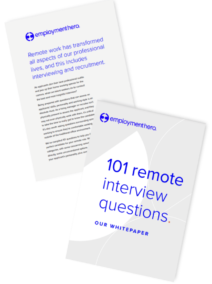Key Facts
| Employment Terms | |
| Timezone | Four main time zones: Eastern time (GMT -4), Central Time (GMT -5), Mountain time (GMT-6) and Pacific time (GMT-7). *There are other timezones to include Hawaii, Alaska and territories. |
| Currency | US Dollar (USD) |
| Capital city | Washington D.C. |
| Official language | English |
| Ease of doing business | Very friendly to business (#6 out of 190) |
| Minimum wage | USD $7.25 (federal – may vary by state) |
| Estimated employer cost | 8% – 33.65% (varies per state) |
| Employer retirement contribution: 401K | The 401K is a retirement savings plan that is offered by employers to employees. This is not mandatory, however there are tax-advantages for those who contribute a portion of their pre-tax earnings (limits apply). Some employers also choose to contribute and match employees’ contributions. |
About the United States
The United States is a developed nation with the world’s largest economy (by GDP) and a population of over 331 million people. The US has a highly regarded education system, with a large number of universities and colleges offering a wide range of courses and programs. The US also has comprehensive employment regulations that cover a variety of areas, including terms of employment, working conditions, and minimum wages by industry. These regulations vary by state and are enforced by federal and state agencies to protect the rights of workers. Overall, the US offers a diverse and dynamic workforce with opportunities for employment in a range of industries and professions.
Employment in the United States
Working Hours
- The standard full-time working week is typically 40 hours for most employees, although some professions may require longer hours. Variations are common, but must be agreed in writing.
Overtime
- The Fair Labor Standards Act (FLSA) requires employers to pay non-exempt employees overtime pay of at least 1.5 times their regular rate of pay for any hours worked beyond 40 in a workweek. While there is no federal law mandating a maximum number of working hours per week, some states have implemented such laws, with limits ranging from 35 to 48 hours per week. Employers and employees may agree to variations in working hours, but any changes to the hours of work must be agreed upon in writing.
Probationary Period
- The US doesn’t have federal regulations for probationary periods, but employers use them to evaluate new employees. The length varies by employer and position, usually lasting 30 to 90 days.
Payroll Cycle
- The most common payroll cycles are bi-weekly (every two weeks), semi-monthly (twice a month), and monthly.
Main Types of Leave in the United States
Annual Leave
Private employers are not required to offer annual leave, but some do provide paid time off (PTO) or vacation time to their employees. PTO and vacation time amounts vary based on the employer and the employee’s tenure.
Sick Leave
Sick leave policies vary by employer and state. Some employers offer paid sick leave as a benefit, while others do not. This leave can typically be used when an employee is ill or needs to care for a sick family member, and the amount of leave available can vary based on company policy and the employee’s tenure.
Parental Leave
Parental leave is not required by US federal law, but some employers offer it as a benefit. Eligible employees can take up to 12 weeks of unpaid leave under the Family and Medical Leave Act for certain family and medical reasons. Some employers may also offer paid parental leave, and some states have laws mandating paid family leave, which can include parental leave.
Other Leave
Bereavement leave: Leave taken for the death of a family member or loved one, but is not required by law.
Jury duty leave: Leave taken when an employee is required to serve on a jury and is required by law.
Military leave: Leave taken by employees who are called to active duty in the military, and is required by law.
Religious leave: Leave taken for religious observances, and is required by law in some states.
Employment Termination
Notice Period
In the US, notice periods for employment termination are usually 2-4 weeks, but can be up to 3 months. During probationary periods, notice periods may not be required or reduced to one week.
Termination
Employers are required to have a valid reason for terminating an employee’s employment, such as poor performance, misconduct, redundancy, or incapacity. Before terminating an employee, employers must provide written notice and go through a consultation or investigation process. The amount of notice given to the employee varies based on factors such as their age, length of service, and the terms of their employment agreement. In some cases, employees who are made redundant are eligible for severance pay, which is calculated based on their length of service and regular wages.
Severance
Severance pay in the US is a form of compensation that some employers offer to employees who lose their job due to factors such as:
- Layoffs
- Position elimination
- Termination for other reasons
The amount of severance pay varies and is determined by several factors, including the employee’s length of service, position, and company policies.
There is no federal law mandating severance pay, but it is sometimes offered as a benefit by companies. The primary goal of severance pay is to provide financial support to employees during their period of job transition. It can be paid out as a lump sum or through a series of payments, and employees may be asked to sign a release agreement in exchange for receiving it, waiving their right to sue or make legal claims related to their termination.
Disclaimer: The information on this webpage is current as at 19 September 2022, and has been prepared by Employment Hero Pty Ltd (ABN 11 160 047 709) and its related bodies corporate (Employment Hero). The views expressed on this webpage are general information only, are provided in good faith to assist employers and their employees, and should not be relied on as professional advice. The information is based on data supplied by third parties. While such data is believed to be accurate, it has not been independently verified and no warranties are given that it is complete, accurate, up to date or fit for the purpose for which it is required. Employment Hero does not accept responsibility for any inaccuracy in such data and is not liable for any loss or damages arising either directly or indirectly as a result of reliance on, use of or inability to use any information provided on this webpage. You should undertake your own research and to seek professional advice before making any decisions or relying on the information displayed here.

Hiring Process in the US
Sorted.
Hiring an employee in the US is no easy task. Especially, if you are overseas, and lack the knowledge of employment law and regulations relating to international HR compliance, payroll, benefits and taxes.
Employment Hero started in Australia and we fully understand all the ins and outs of hiring in the local market, so we can help you throughout the step-by-step process.

US Employment Law
Decoded.
The US laws can be rather complex and vary from state to state. You should be aware of the rules and what your employer's rights and responsibilities are. Under US employment law, employers and employees both have rights and responsibilities. Do you know your responsibilities?

Employ anyone, anywhere.
Easily.
Employment Hero’s Global Teams service takes care of the complex admin; international employment legislation, local tax and pension minimums, insurance obligations and more. Hiring incredible talent from anywhere in the world has never been easier.
over the past year


Related Resources


Employer of Record.
Hire Remotely
Global Teams is the best-in-class global (EOR) Employer of Record that enables you to hire based on skill, not location. Whether you're expanding into new markets or struggling to fill open roles, we connect the best talent with the best employers, legally and ethically.





